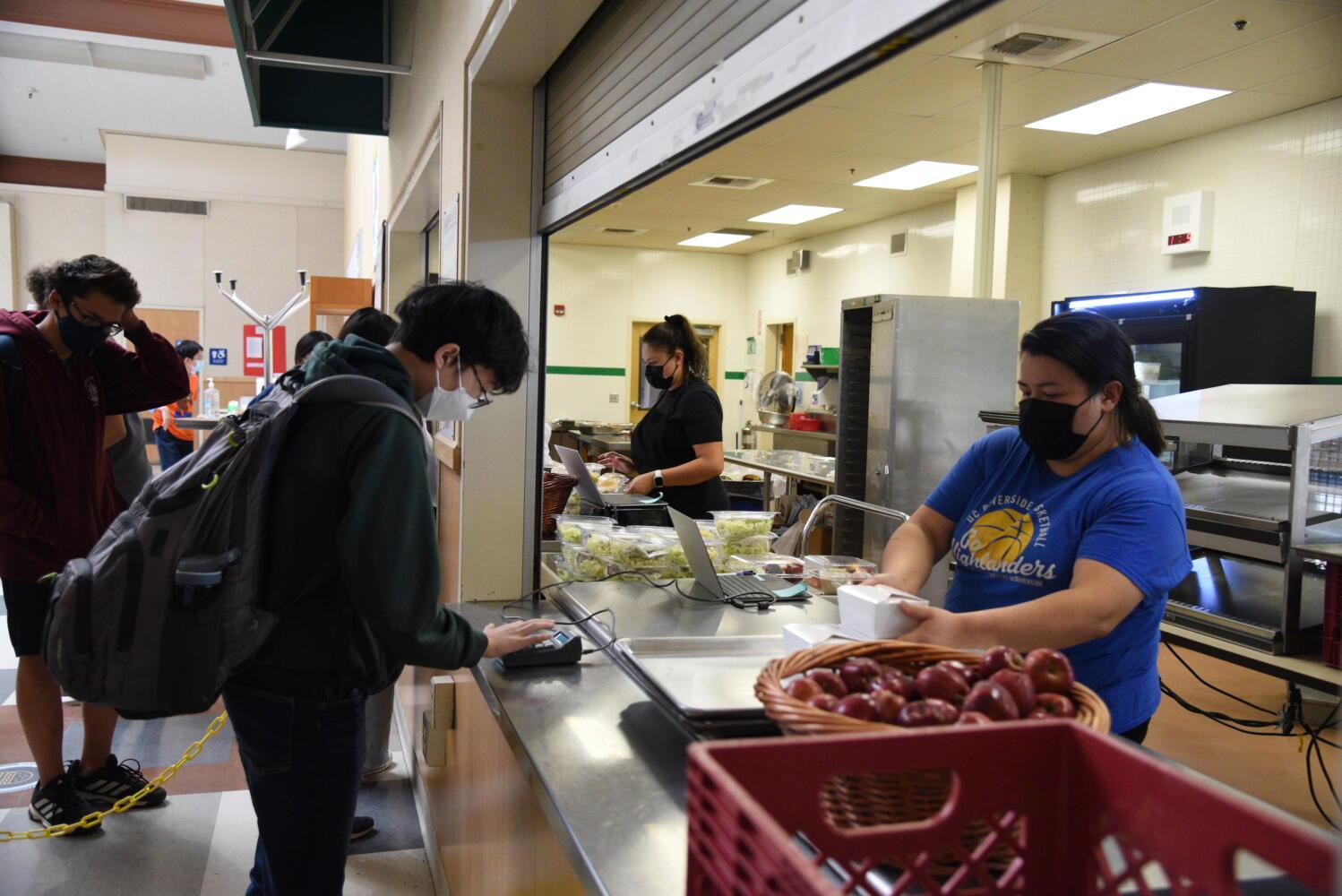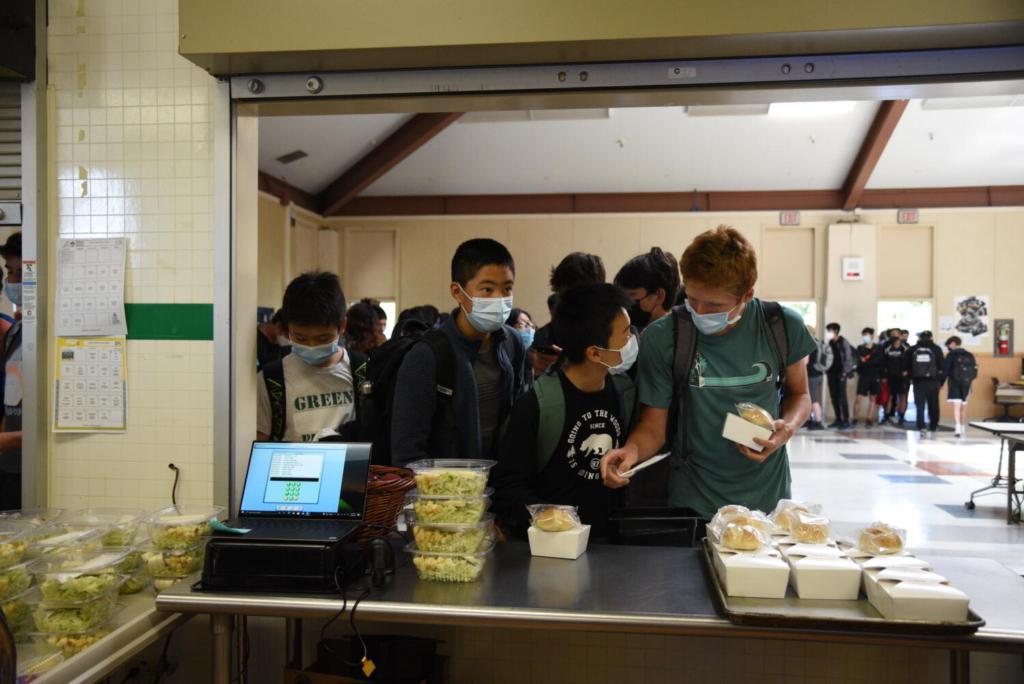As the lunch bell rings, classroom doors open and the sound of scuffling students is heard throughout campus. Hungry teens anxiously rush to claim their spot in the quickly forming line outside the Student Center in order to get their coveted free school lunch.
This chaotic scene is the result of the new Free School Meals For All Act of 2021, signed into law by Gov. Gavin Newsom on July 9. This bill enables all 6 million public school students in California to receive two free meals every day. It will ensure that students with food insecurity have access to daily nutritious meals and reduce the stigma surrounding the need for free lunch by improving lunch accessibility.
“I appreciate [the lunch] and I think it’s a great option for lower-income students and just to everyone,”
—Alec Profit, junior
Story continues below advertisement
In addition, the state plans to allocate $650 million annually starting in the 2022-2023 school year to public schools to continue offering free meals to students.
“PAUSD [Palo Alto Unified School District] currently receives $4.31 per lunch and $2.46 per breakfast for every student from the Federal government,” Alva Spence, PAUSD’s student nutrition director wrote in an email to Verde. “Food is typically budgeted in the 35 percent range, putting us at approximately $1.60 for a lunch and 95 cents for a breakfast.”
Food for thought
The new free lunch policy is a substantial shift from previous paid lunch programs in PAUSD schools.
“I went to Greene and I felt like the lunch was always overpriced because it was $5 for a cheese pizza,” freshman Joshua Kao said. “Now we get everything for free, and it saves [me] a lot of money.”
While the policy is specifically aimed at helping low-income students who previously may not have been able to afford lunches every day, students of all income levels have been taking advantage of the new provision.
“I appreciate [the lunch] and I think it’s a great option for lower-income students and just to everyone,” junior Alec Profit said.
Free for all
Of all of the factors that could compel students to get lunch, one remains paramount: the food is free, motivating them to wait in the lines that often circle the quad.
“Waiting in the line is worth it for the quality and the quantity of the free food,” junior Sandhya Krishnan said.

Krishnan said the meals’ low prices motivated her to periodically begin eating school lunch this year. According to an anonymous Verde opt-in survey conducted from Sept. 13-16 through a digital form, 70.8% of respondents who have eaten school lunch this year indicated that the lunches being free contributed to their decision to get it.
However, this increased demand has not come without drawbacks. Certain popular lunch options run out within minutes of the start of lunch, according to the Palo Alto High School food service staff. With the quantity of demand constantly fluctuating, it is hard for staff members to predict how many students will opt for free lunch on a given day. Food service staff member Rosa Lopez said she has been trying to adapt to the higher demand for certain food items.
Paly’s two food service staff members said they struggle to juggle the time constraints of a 40-minute lunch while serving hundreds of students each day.
“We anticipated the Paly meal participation to double, which it has,” Spence wrote. “We are feeding close to 300 per day.”
A plan for the future
As the demand from students for free lunch stabilizes, Spence said the district is working to bring back the number of available choices and increase the speed of service.
However, due to the coronavirus, Lopez said there are many restrictions that prevent them from serving students as quickly as they did before the pandemic, as well as serving all of the food options previously available.
“Before [the pandemic], we had a bar out there and we used to have more items,” Lopez said. “And because of COVID we can’t have none of that stuff. Health, safety regulations, we can’t do much about them. If we were non-COVID then of course we could try other things that kids might like in our menus, but because of that [COVID-19] we are limited.”
“For the future, something I would hope to see is an option for people who cannot make it in time before the food runs out,”
—Sandhya Krishnan, junior
As the food service staff and the district get comfortable and situated with the new lunch program, students are looking forward to improved offerings in the future.
“For the future, something I would hope to see is an option for people who cannot make it in time before the food runs out,” Krishnan said. “Whether it be free or not, just something that can satisfy people’s hunger like a snack.”





